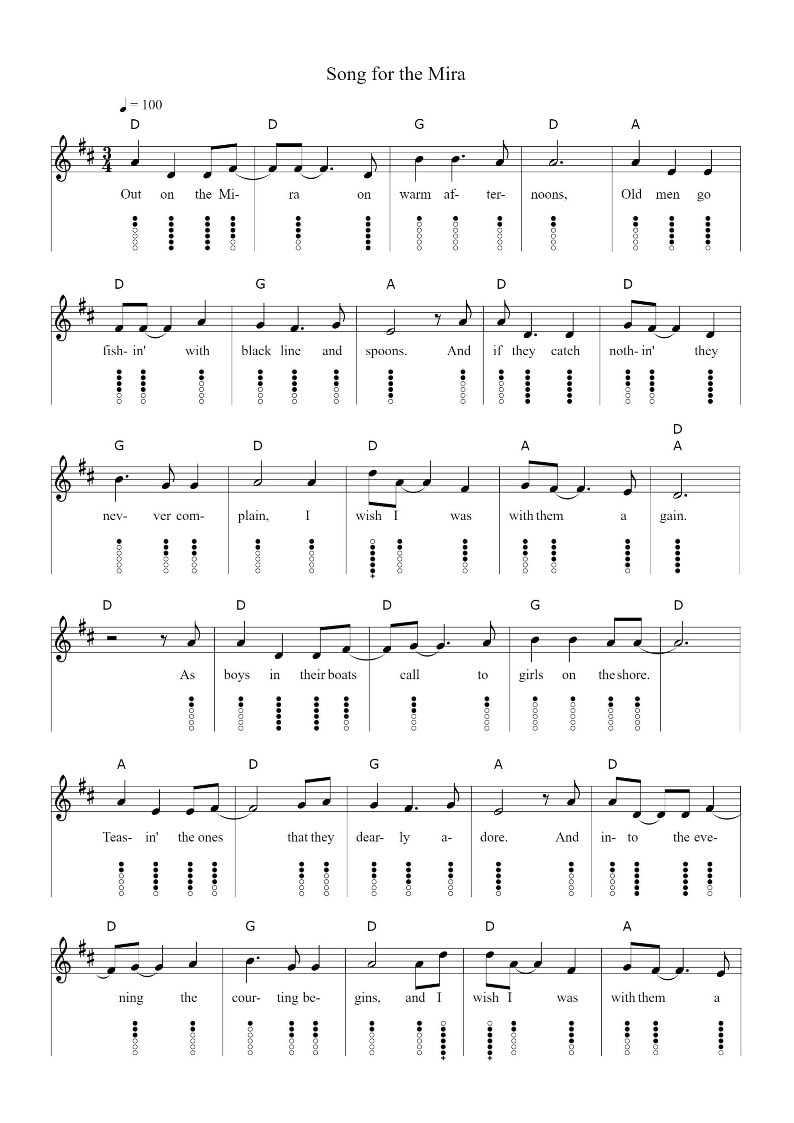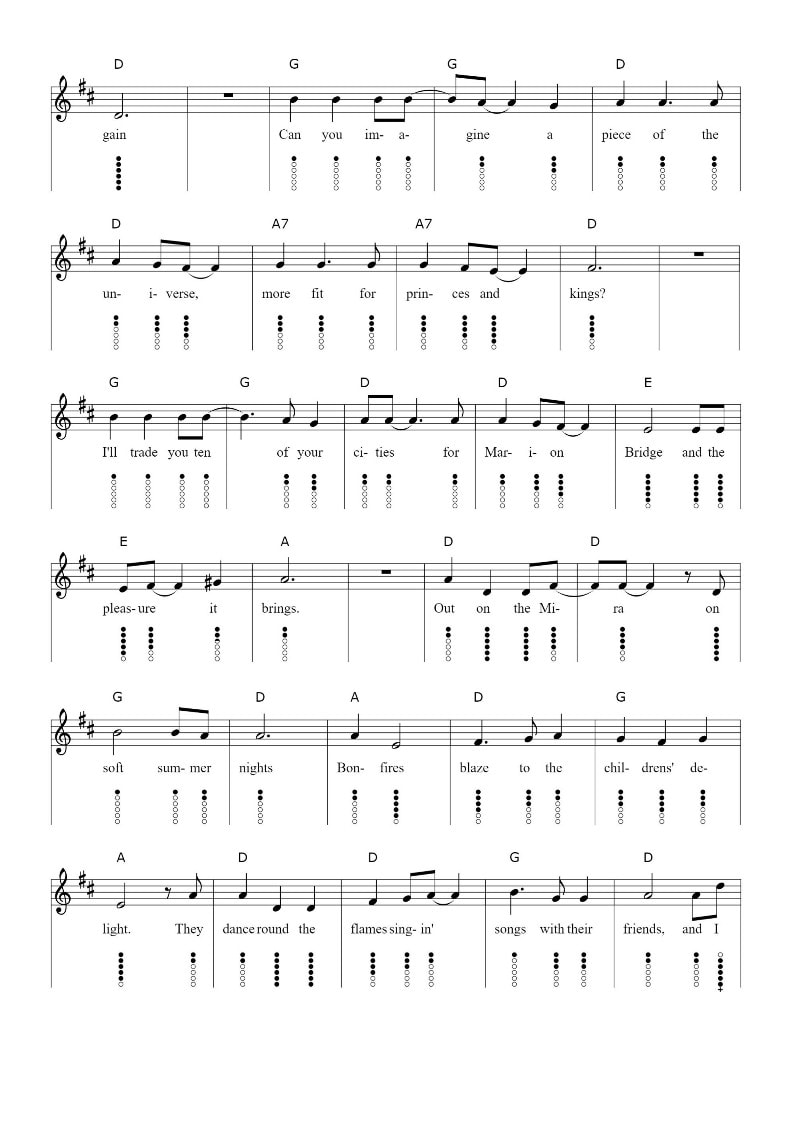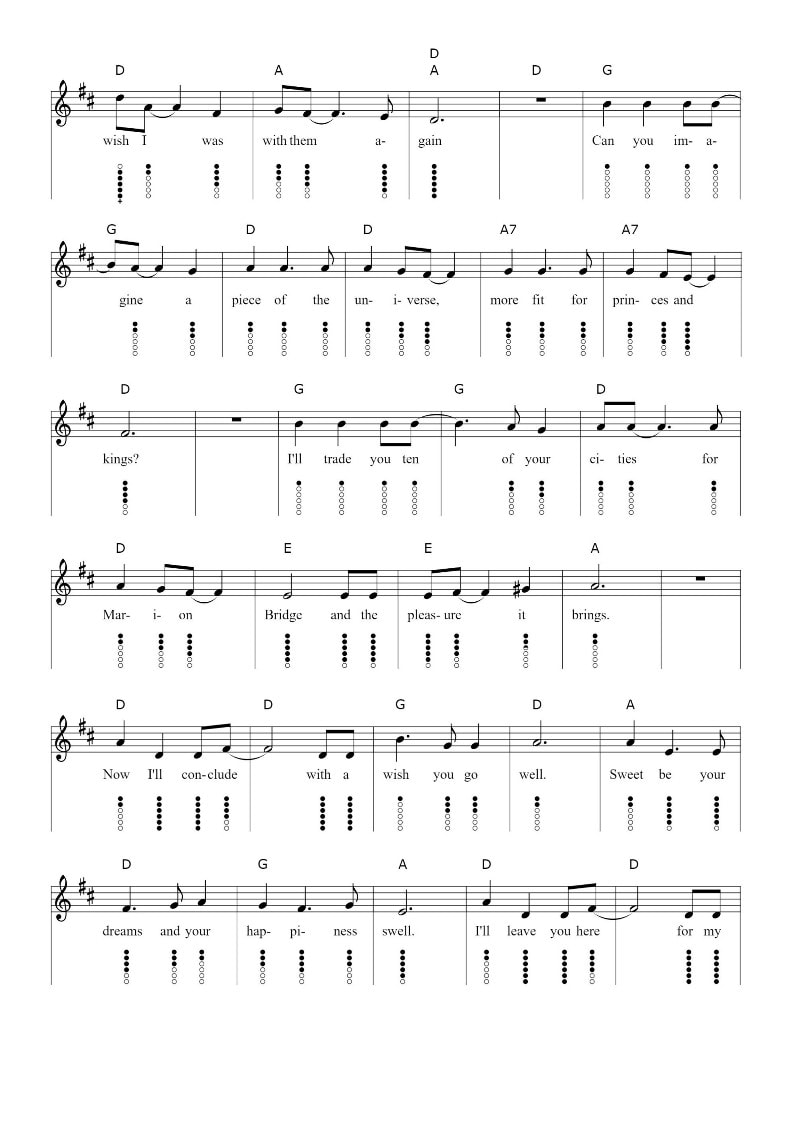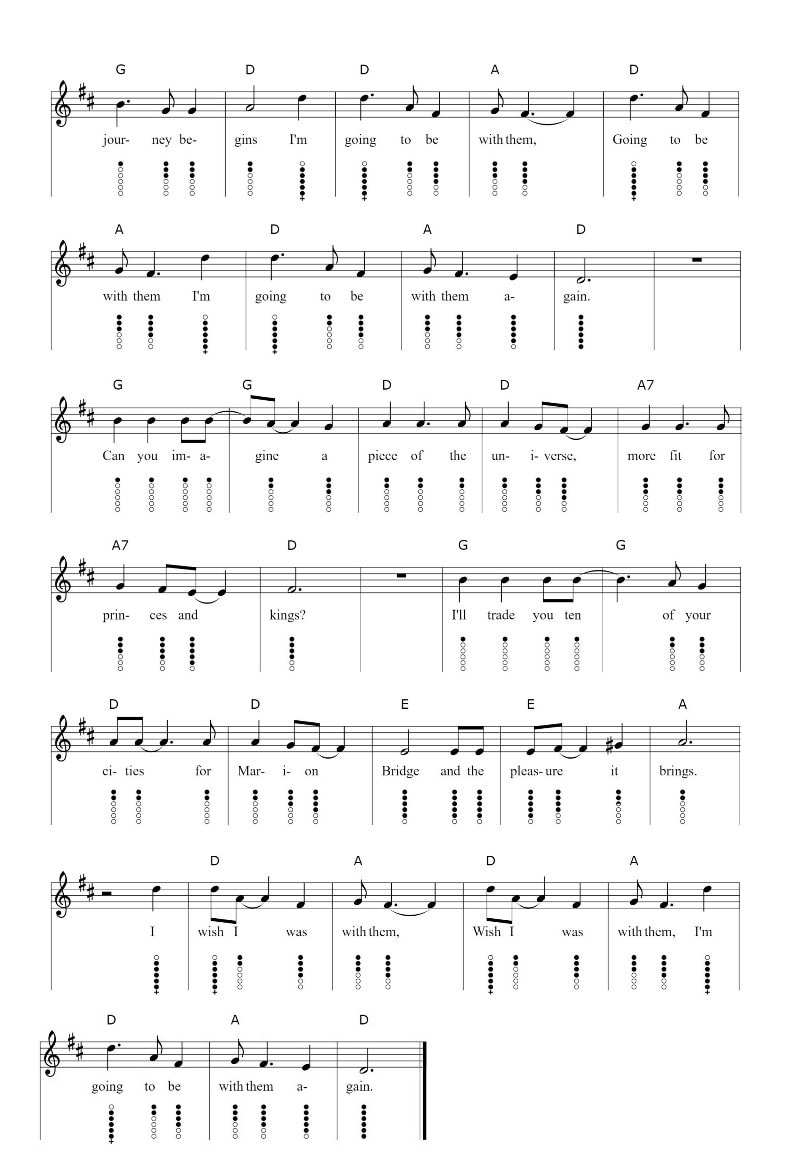Song For The Mira Tin Whistle Notes
Song For The Mira Tin Whistle Sheet Music Notes With Piano Chords In D Major.
The Mira River, located in Nova Scotia, Canada, has long been a source of inspiration for artists and poets. Its tranquil waters, lush forests, and rugged coastline have captivated the hearts of many, but it is through the power of music that the river truly comes alive. One particular song, aptly titled 'Song for the Mira,' has become an enduring tribute to this beloved river, its people, and its culture.
Composed by Canadian singer and songwriter Allister MacGillivray in 1973, 'Song for the Mira' is a ballad that celebrates the beauty and spirit of the Mira River. It has since become an iconic piece of Canadian folk music, beloved by locals and visitors alike. The song's enduring popularity speaks to its powerful ability to evoke a strong sense of place and community among listeners.
At its core, 'Song for the Mira' is a love letter to the Mira River and the people who call it home. MacGillivray's lyrics paint a vivid picture of the river's natural beauty, from its 'deep rolling waters' to its 'wild and windswept shoreline.' He also pays homage to the hardworking and resilient people of the Mira, who have built their lives and livelihoods along its banks. The song's simple yet poignant melody, accompanied by the gentle strumming of a guitar, perfectly captures the peaceful and serene atmosphere of the river.
However, 'Song for the Mira' is more than just a tribute to a physical place. It also celebrates the intangible sense of belonging and community that the Mira River represents. The river has long been a central part of the culture and identity of the people living along its shores. For centuries, it has provided a source of food, transportation, and inspiration for the local Mi'kmaq First Nations and the Acadian and Scottish settlers who have made this area their home. 'Song for the Mira' pays tribute to this rich cultural heritage and the deep connection that the people have with the river.
The song's enduring popularity can also be attributed to its universal themes of love, longing, and nostalgia. The Mira River, with its tranquil waters and stunning scenery, has a way of evoking a sense of nostalgia and longing in those who have experienced its beauty. Whether it is through memories of childhood summers spent swimming in its waters or the longing for a place to call home, 'Song for the Mira' resonates with people on a deeply personal level. Its message of finding peace and solace in the natural world speaks to the universal human experience.
Furthermore, 'Song for the Mira' has become more than just a song; it has become a symbol of the Mira River's significance to the people of Nova Scotia. It has been covered by numerous artists, both within Canada and internationally, and has been played at important events and ceremonies, including the 1987 Canada Winter Games and the 2010 Vancouver Winter Olympics. The song has become a source of pride for the local community and a way to share the beauty of the Mira River with the world.
In conclusion, 'Song for the Mira' is a powerful tribute to a beloved river and its people. Through its simple yet profound lyrics and haunting melody, the song encapsulates the beauty, culture, and sense of community that the Mira River represents. It has become an enduring symbol of the deep connection between people and their natural surroundings and a reminder of the importance of preserving and cherishing these places for generations to come. As long as the Mira River flows, so too will the enduring legacy of 'Song for the Mira.'
Composed by Canadian singer and songwriter Allister MacGillivray in 1973, 'Song for the Mira' is a ballad that celebrates the beauty and spirit of the Mira River. It has since become an iconic piece of Canadian folk music, beloved by locals and visitors alike. The song's enduring popularity speaks to its powerful ability to evoke a strong sense of place and community among listeners.
At its core, 'Song for the Mira' is a love letter to the Mira River and the people who call it home. MacGillivray's lyrics paint a vivid picture of the river's natural beauty, from its 'deep rolling waters' to its 'wild and windswept shoreline.' He also pays homage to the hardworking and resilient people of the Mira, who have built their lives and livelihoods along its banks. The song's simple yet poignant melody, accompanied by the gentle strumming of a guitar, perfectly captures the peaceful and serene atmosphere of the river.
However, 'Song for the Mira' is more than just a tribute to a physical place. It also celebrates the intangible sense of belonging and community that the Mira River represents. The river has long been a central part of the culture and identity of the people living along its shores. For centuries, it has provided a source of food, transportation, and inspiration for the local Mi'kmaq First Nations and the Acadian and Scottish settlers who have made this area their home. 'Song for the Mira' pays tribute to this rich cultural heritage and the deep connection that the people have with the river.
The song's enduring popularity can also be attributed to its universal themes of love, longing, and nostalgia. The Mira River, with its tranquil waters and stunning scenery, has a way of evoking a sense of nostalgia and longing in those who have experienced its beauty. Whether it is through memories of childhood summers spent swimming in its waters or the longing for a place to call home, 'Song for the Mira' resonates with people on a deeply personal level. Its message of finding peace and solace in the natural world speaks to the universal human experience.
Furthermore, 'Song for the Mira' has become more than just a song; it has become a symbol of the Mira River's significance to the people of Nova Scotia. It has been covered by numerous artists, both within Canada and internationally, and has been played at important events and ceremonies, including the 1987 Canada Winter Games and the 2010 Vancouver Winter Olympics. The song has become a source of pride for the local community and a way to share the beauty of the Mira River with the world.
In conclusion, 'Song for the Mira' is a powerful tribute to a beloved river and its people. Through its simple yet profound lyrics and haunting melody, the song encapsulates the beauty, culture, and sense of community that the Mira River represents. It has become an enduring symbol of the deep connection between people and their natural surroundings and a reminder of the importance of preserving and cherishing these places for generations to come. As long as the Mira River flows, so too will the enduring legacy of 'Song for the Mira.'




